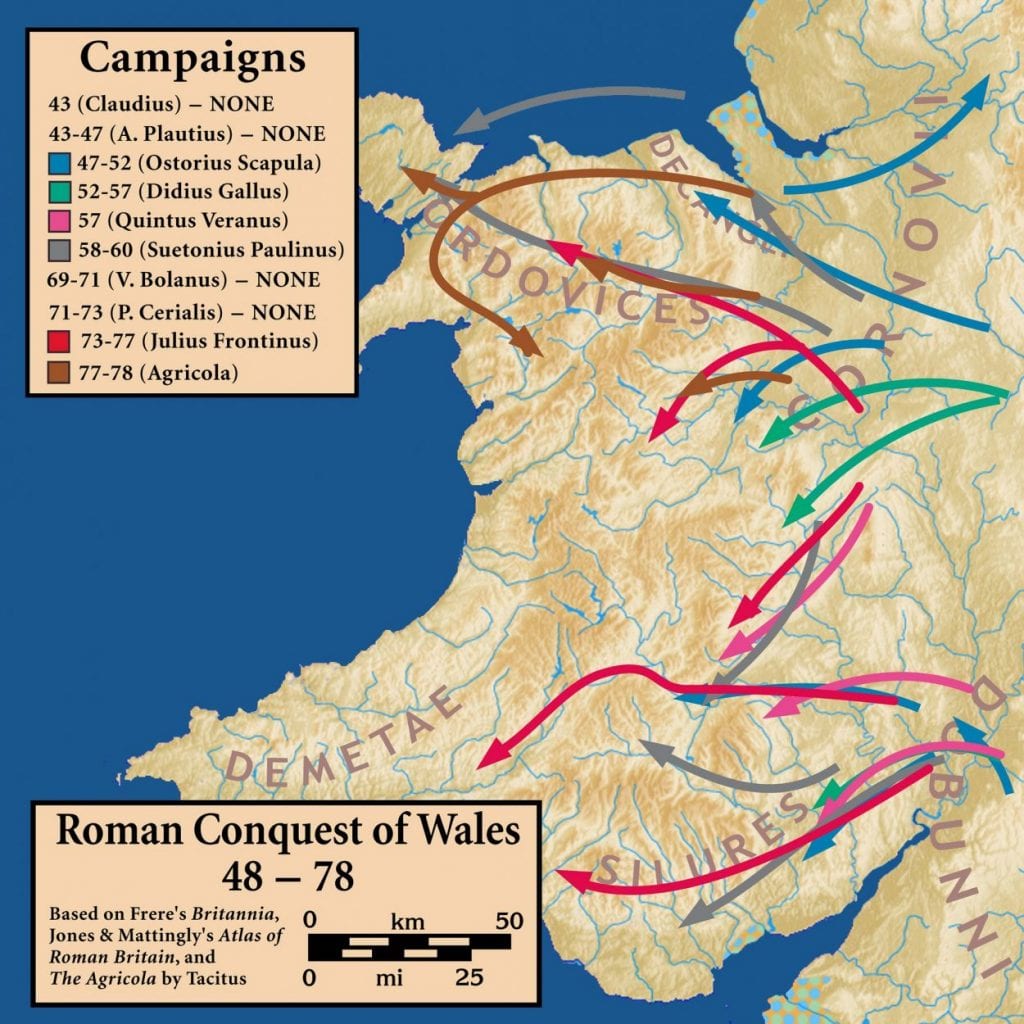The conquest of Wales began in either AD 47 or 48, following the landing of Roman forces in Britannia sent by Emperor Claudius in AD 43.
Prior to Roman expansion, Britannia enjoyed relatively peaceful diplomatic and trading links with the Romans in the century since Julius Caesar’s expeditions in 55 and 54 BC.
With the arrival of the main invasion force to Britannia, consisting of four legions under the command of Aulus Plautius, the Roman’s advanced deep into the lands controlled by tribal confederations of ancient Britons.
The Roman’s identified that Wales was rich in material wealth for exploitation, with hostilities commencing in the mid-1st century AD, when Publius Ostorius Scapula moved against the Deceangli in Northern Wales and West Cheshire.

Ostorius was able to quickly subdue the Deceangli, but campaigns to penetrate deeper into Welsh lands against the Silures, and then the Ordovices were repulsed with fierce resistance.
At the Battle of Caer Caradoc in AD 50, the Ordovice were crushed by the Legio IX Hispana, and the Legio XX Valeria Victrix, resulting in their leader, Caratacus being presented as a trophy in Emperor Claudius’s Roman triumph. Ordovice strongholds would continue to remain defiant, until finally being subdued by the Roman governor Gnaeus Julius Agricola in the campaign of AD 77–78.
Successive governors made several attempts to bring the Silures into submission. Some Roman sources state they were eventually defeated by Sextus Julius Frontinus in a series of campaigns ending around AD 78, however, the Roman historian Tacitus wrote : non atrocitate, non clementia mutabatur – meaning the tribe “was changed neither by cruelty nor by clemency”, suggesting the Silures most likely came to terms.
The Demetae, who inhabited modern Pembrokeshire and Carmarthenshire in south-west Wales appear to be the only tribal confederation who survived the conquest period and Roman occupation, with their homeland and tribal name remaining intact through to the Middle Ages.
Roman rule in Wales was essentially a military occupation and was planted with a large network of around 40 forts and 13 fortlets, but very few civilian population centres. Regional control was administered in the north from the legionary fortress of Deva Victrix, with the south administered from the legionary fortress of Isca Augusta. The southern regions saw the most development, with the emergence of a civitates at Moridunum (capital of the Demetae tribe), and the construction of the town of Venta Silurum (capital of the Silures).
By the early 5th century, the Roman Empire was facing internal rebellion and external threats from Germanic tribes. This led to a widespread deterioration of the Western Roman world, and the permanent detachment of Britannia from the rest of the Empire.
Britannia would develop into Sub-Roman Britain, with the emergence of the Kingdom of Demetia in the south of Wales, and the northern kingdom of Gwynedd during the early Middle Ages.





